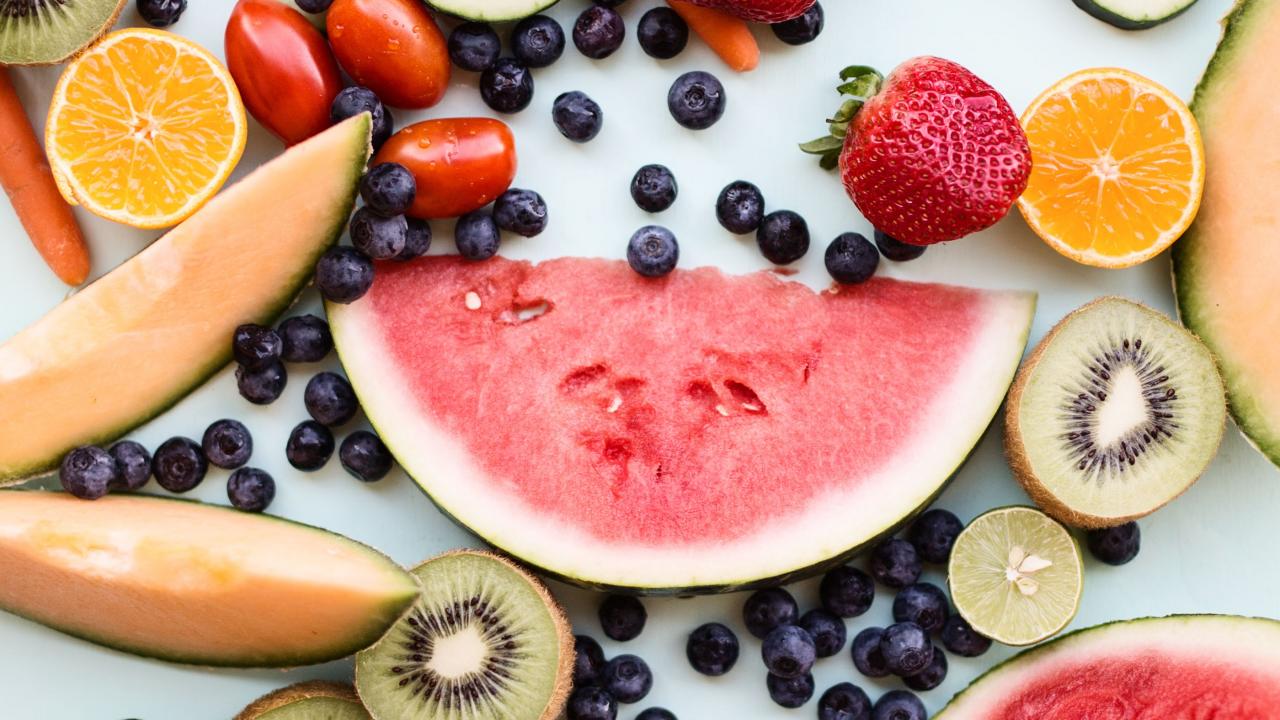
Brighten Your Plate by Choosing Colorful Fruits and Vegetables
There is a rainbow of fruits and vegetables that offer several health benefits! Fruits and vegetables get their colors from phytochemicals and may help to prevent chronic diseases such as heart disease, high blood pressure, and type 2 diabetes.
Additionally, colors of the fruits and vegetables we eat can give us a hint about its nutritional value. For example, dark leafy greens are a good source of folate, while red and orange fruits and vegetables are often a good source of Vitamin A. Eating a rainbow of colorful fruits and vegetables can help provide vitamins, minerals, and other nutrients needed for a healthy, well-balanced diet such as antioxidants, Vitamin A, Vitamin C, potassium, and fiber.
MyPlate encourages making half your plate fruits and vegetables, while varying your vegetables and focusing on whole fruits. Increasing the amount fruits and vegetables in your diet is a great step in improving your health! One possibility is coloring your palate and plate with several shades of fruits and vegetables throughout your day’s meals and snacks.
For example, add bananas, raisins, or berries to cereal or oatmeal for breakfast. Raw veggie sticks with hummus and 100% fruit cups make great snacks! You can also add chopped vegetables such as onions, garlic, and celery to your favorite soups and stir-fries. Visit the CNS blog for more creative ways to enjoy fruits and vegetables.
Listed below are some examples of fruits and vegetables that fall into the 5 main color groups:
- Red: Strawberries, blood oranges, grapefruit, cranberries, watermelon, red apples, raspberries, cherries, tomatoes, pomegranate, red grapes, beets, red peppers, radishes, red onions, tomatoes, and rhubarb
- Yellow/Orange: Lemon, pineapples, mangoes, corn, oranges, persimmons, nectarines, tangerines, apricots, papayas, cantaloupe, peaches, carrots, butternut squash, pumpkin, yellow summer squash, sweet potatoes, and yams
- White: White nectarines, white peaches, bananas, cauliflower, garlic, ginger, mushrooms, onions, parsnips, potatoes, turnips and white corn
- Green: Pears, green apples, limes, avocados, honeydew, kiwis, green grapes, broccoli, artichokes, arugula, asparagus, brussels sprouts, green beans, cabbage, celery, cucumbers, lettuce, green onions, okra, peas, green peppers, snow peas, spinach, and zucchini
- Blue/Purple: Purple grapes, blackberries, plums, blueberries, boysenberries, raisins, eggplant, and purple cabbage
Get one-step closer to eating a rainbow of fruits and vegetables, by trying something new from the suggested list in your next meal or snack. For more information on adding color to your diet, check out this infographic from the American Heart Association.
